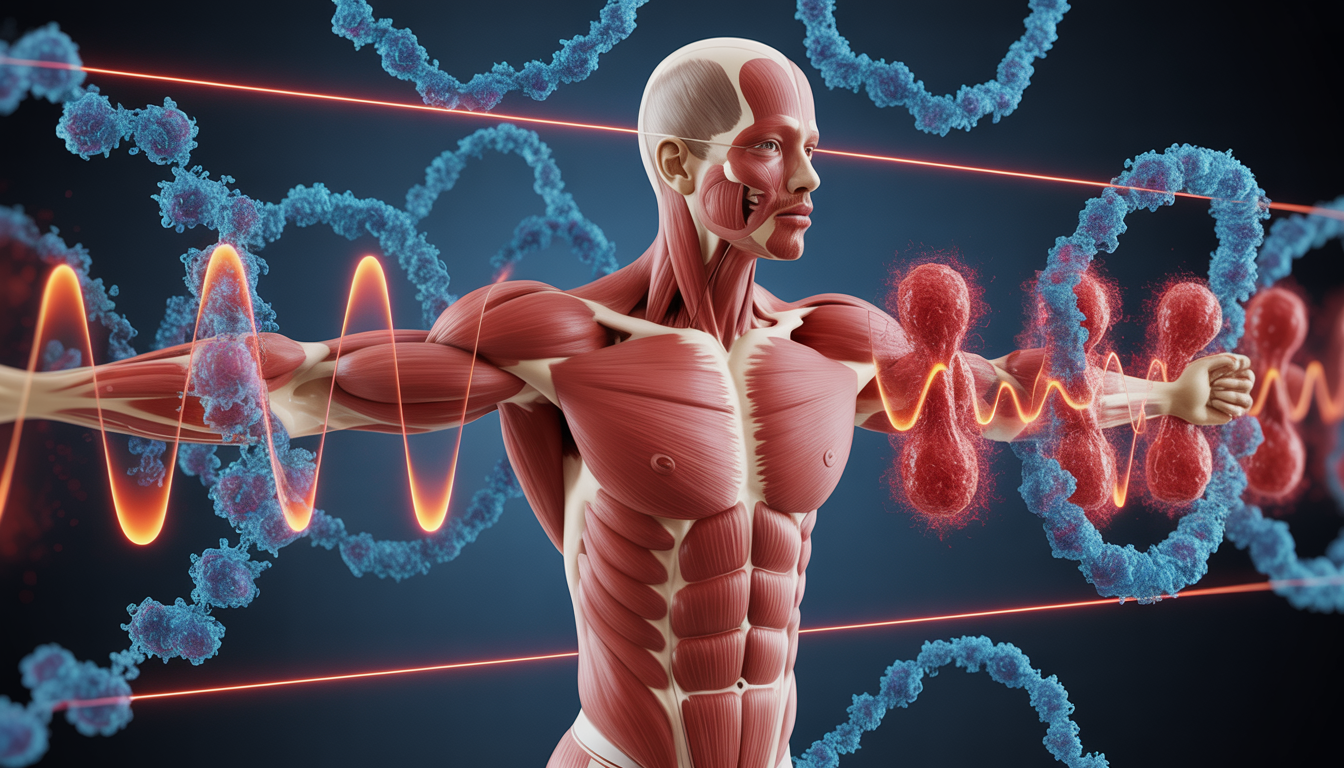


Citrulline Malate Dosage & Benefits: How Much to Take Daily
By Robert Schinetsky
If you've used a pre-workout supplement anytime over the last decade, then you're familiar with citrulline malate. It has become a staple ingredient in formulations along with caffeine and beta-alanine. Citrulline malate is one of those rare dietary supplements favored by real athletes in the gym and on the field, bolstered by a solid body of evidence in research labs. It's heralded for its ability to aid performance, enhance nitric oxide production, and boost muscle pumps. Previous research on citrulline documents numerous assorted benefits, including:
● Better exercise performance in resistance-training and cardio
● Decreased muscle soreness post-workout
● Better recovery
● Improved circulation
● Lower blood pressure
● Reduced fatigue
Newly published research continues to add to the body of research demonstrating the supplement's utility by athletes of all kinds. Before we cover the new study's findings, let's briefly recap what citrulline malate is and how it works.
Citrulline Malate 101 Recap
While most of you reading this are familiar with citrulline malate, new individuals are always entering fitness and beginning their supplement journey. With that in mind, here's a quick review of citrulline malate.
It is a combination of the amino acid L-Citrulline and malic acid -- an organic compound found in many foods, including fruits, that imparts a tart taste. Citrulline emerged as a more effective nitric oxide supplement than arginine, due to a combination of higher bioavailability and less GI stress. Supplementing with L-citrulline results in higher plasma arginine levels, which can yield greater NO production and endothelial-mediated vasodilation function.
Malic acid is an intermediate of the Krebs (TCA) cycle that has been suggested to increase the rate of ATP production by mitigating lactate production during states of high flux. While the ergogenic properties of malic acid supplementation have been under-researched in humans when taken in isolation, theoretically it offers additional complementary means to improve exercise performance and fatigue resistance alongside citrulline.

While there is often a debate as to which form of citrulline is superior (L-Citrulline vs Citrulline Malate), the reality is that with both L-Citrulline and Citrulline malate you're still getting pure citrulline; however, with malate the door is open for additional benefits. The key is in the citrulline malate dosage. Citrulline Malate dosage should be at 8,000mg. At a one-to-one ratio of Citrulline-to-Malate, this gives 4,000 mg Citrulline and 4,000 mg Malate -- which is perfectly in line with the body of research investigating the ergogenic properties of citrulline malate, including the latest study.
8 GRAMS OF CITRULLINE MALATE BOOSTS WEIGHT TRAINING PERFORMANCE
19 recreationally-active women (23.5 ± 3.1 years; 164.8 ± 7.0 cm; 61.9 ± 27.4 kg; 28.8 ± 8.1% body fat) completed 2 randomized, double-blind, crossover trials consuming 8g citrulline malate + 12g dextrose or placebo (12g dextrose).[5]
60 minutes after consuming either citrulline malate or placebo, the women completed a 5-repetition isokinetic leg extension protocol followed by a 50-repetition isokinetic leg extension protocol. Researchers found that an acute single citrulline malate dose of 8g supplementation, compared to placebo, significantly increased:
● Total work completed
● Relative total work
● Total work during maximum repetition
While no differences between placebo and citrulline malate were documented for peak torque production in either the 5-repetition or 50-repetition protocols, this isn't really surprising as citrulline malate is more for stamina, endurance, pumps, and total work capacity as opposed to raw power output. These findings regarding torque are also in line with previous research in men.[7]
Potential Synergy with Magnesium & Potassium
A 2021 meta-analysis, including 17 studies with a total of 889 participants, found that magnesium supplementation increased nitric oxide levels as well as reduced markers of c-reactive protein (CRP).[8]
Earlier studies have also noted that magnesium increases eNOS activity, resulting in vasodilation, and potassium can soften the endothelium and increase nitric oxide production.[9,10]
Together, these minerals complement the NO-enhancing effects of Citrulline Malate leading to greater blood vessel dilation, blood flow, and exercise performance.
Takeaway
8 grams of citrulline malate is effective for improving resistance-training performance. It can also enhance muscle pumps, aid recovery, and support cardiovascular health all with no adverse side effects!
AML Pre Workout, AML Stim Free Pre Workout, and AML Pre Workout X-Treme supply full, research-backed doses of citrulline malate (8-10 grams) in combination with an arsenal of other ergogenics. For those wondering how much citrulline malate per day is effective, these supplements provide optimal amounts for performance enhancement.
Grab a bottle of your favorite AML pre workout supplement and experience the performance enhancing potential of citrulline malate yourself! Consider when to take citrulline malate for maximum benefits, ideally before your workout session.
© Published by from Advanced Research Media, Inc. 2022
© Reprinted with permission from Advanced Research Media, Inc.
References
1. Suzuki, T., Morita, M., Kobayashi, Y. et al. Oral L-citrulline supplementation enhances cycling time trial performance in healthy trained men: Double-blind randomized placebo-controlled 2-way crossover study. J Int Soc Sports Nutr 13, 6 (2016) doi:10.1186/s12970-016-0117-z
2. Vårvik FT, Bjørnsen T, Gonzalez AM. Acute Effect of Citrulline Malate on Repetition Per-formance During Strength Training: A Systematic Review and Meta-Analysis. Int J Sport Nutr Exerc Metab. 2021 Jul 1;31(4):350-358. doi: 10.1123/ijsnem.2020-0295. Epub 2021 May 19. PMID: 34010809.
3. Gonzalez AM, Townsend JR, Pinzone AG, Hoffman JR. Supplementation with Nitric Oxide Precursors for Strength Performance: A Review of the Current Literature. Nutrients. 2023 Jan 28;15(3):660. doi: 10.3390/nu15030660. PMID: 36771366; PMCID: PMC9921013.
4. Park HY, Kim SW, Seo J, Jung YP, Kim H, Kim AJ, Kim S, Lim K. Dietary Arginine and Citrulline Supplements for Cardiovascular Health and Athletic Performance: A Narrative Review. Nutrients. 2023 Mar 3;15(5):1268. doi: 10.3390/nu15051268. PMID: 36904267; PMCID: PMC10005484.
5. Gills JL, Spliker B, Glenn JM, Szymanski D, Romer B, Lu HC, Gray M. Acute Citrulline-Malate Supplementation Increases Total Work in Short Lower-Body Isokinetic Tasks for Recreationally Active Females During Menstruation. J Strength Cond Res. 2023 Apr 6. doi: 10.1519/JSC.0000000000004095. Epub ahead of print. PMID: 34319940.
6. Gough LA, Sparks SA, McNaughton LR, Higgins MF, Newbury JW, Trexler E, Faghy MA, Bridge CA. A critical review of citrulline malate supplementation and exercise performance. Eur J Appl Physiol. 2021 Dec;121(12):3283-3295. doi: 10.1007/s00421-021-04774-6. Epub 2021 Aug 21. PMID: 34417881; PMCID: PMC8571142.
7. Farney TM, Bliss MV, Hearon CM, Salazar DA. The Effect of Citrulline Malate Supplementation on Muscle Fatigue Among Healthy Participants. J Strength Cond Res. 2019 Sep;33(9):2464-2470. doi: 10.1519/JSC.0000000000002356. PMID: 29176388.
8. Veronese, N.; Pizzol, D.; Smith, L.; Dominguez, L.J.; Barbagallo, M. Effect of Magnesium Supplementation on Inflammatory Parameters: A Meta-Analysis of Randomized Controlled Trials. Nutrients 2022, 14, 679. https://doi.org/10.3390/nu14030679
9. Oberleithner H, Callies C, Kusche-Vihrog K, et al. Potassium softens vascular endothelium and increases nitric oxide release. Proc Natl Acad Sci U S A. 2009;106(8):2829-2834. doi:10.1073/pnas.0813069106.
10. Howard, A. B., Alexander, R. W., & Taylor, W. R. (1995). Effects of magnesium on nitric oxide synthase activity in endothelial cells. The American Journal of Physiology, 269(3 Pt 1), C612-8. https://doi.org/10.1152/ajpcell.1995.269.3.C612







